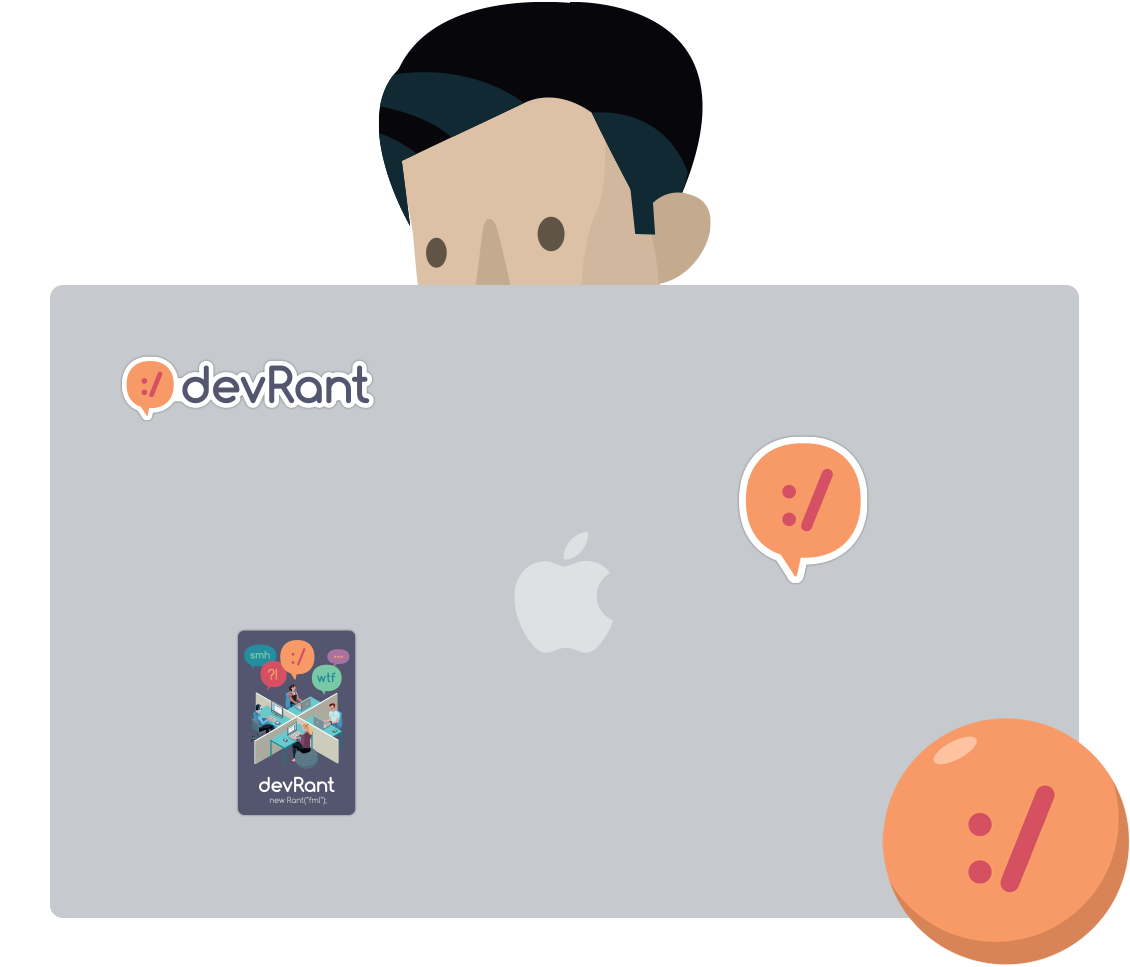Join devRant
Do all the things like
++ or -- rants, post your own rants, comment on others' rants and build your customized dev avatar
Sign Up
Pipeless API

From the creators of devRant, Pipeless lets you power real-time personalized recommendations and activity feeds using a simple API
Learn More
Search - "no padding and margin"
-
Long story short: University fucked up single sign on.
For every online service I have, I set a different password, randomly generated ~ 20 characters long. At our university we have multiple systems but they offer a single sign on service which is quite nice because it is so non-transparent which service now uses which authorization. I changed my password a while ago and around the same time they also updated our mail client. Since then I am not able to log in which is not a big deal for me because I have mail forwarding.
Yesterday however I needed another service and also got rejected with my password. I knew from a friend that the passwords are fucked up and that some services have different restrictions (only 12 chars max.), so I decided to search how to reset my password. What the fuck was wrong with these people? It takes you five different pages to get the tiniest bit of information how to reset the password. Then on one page you can login with your single sign on and change the password. On that page you can also set the single sign on password, but if you enter an invalid password (in respect of the the other services) guess what? No feedback that you just locked yourself out of half the systems. Nice job. Also the password requirements are not next to the input fields where you change the password. Noo. That would be way to easy, remember the little small one line on the wall of text three pages ago? There you go.
Ok step one done. Now it should work, shouldn't it? Ohh no not so fast. One needs to activate the seperate service. Where you ask? Perfectly fine question. On the top of page four is a fucking one line table which looks like some five year old had some fun in excel. The button which takes you to the activation page is nearly invisible because of the non existing contrast. Also it is not a button but some arrow pointer thingy. Behind set arrow you have a page listing all differnt kinds of services, the description which you find on page two btw. No padding to decipher this shit what so ever. Nearly on the bottom is your needed button. Yes finally.
Finally I want to login, no good. Try again. Still no good. Go back to the fucked up excel table look at my username and think to myself what's the difference here? The table is so small and again no margin or padding. Apparently they cut of the last character of my normal username which i have which is fucking ridiculous.
What is wrong with you people, we are a TECHNICAL UNIVERSITY, is it so hard for you to find someone decend to unify this shit?1 -
Hey, been gone a hot minute from devrant, so I thought I'd say hi to Demolishun, atheist, Lensflare, Root, kobenz, score, jestdotty, figoore, cafecortado, typosaurus, and the raft of other people I've met along the way and got to know somewhat.
All of you have been really good.
And while I'm here its time for maaaaaaaaath.
So I decided to horribly mutilate the concept of bloom filters.
If you don't know what that is, you take two random numbers, m, and p, both prime, where m < p, and it generate two numbers a and b, that output a function. That function is a hash.
Normally you'd have say five to ten different hashes.
A bloom filter lets you probabilistic-ally say whether you've seen something before, with no false negatives.
It lets you do this very space efficiently, with some caveats.
Each hash function should be uniformly distributed (any value input to it is likely to be mapped to any other value).
Then you interpret these output values as bit indexes.
So Hi might output [0, 1, 0, 0, 0]
while Hj outputs [0, 0, 0, 1, 0]
and Hk outputs [1, 0, 0, 0, 0]
producing [1, 1, 0, 1, 0]
And if your bloom filter has bits set in all those places, congratulations, you've seen that number before.
It's used by big companies like google to prevent re-indexing pages they've already seen, among other things.
Well I thought, what if instead of using it as a has-been-seen-before filter, we mangled its purpose until a square peg fit in a round hole?
Not long after I went and wrote a script that 1. generates data, 2. generates a hash function to encode it. 3. finds a hash function that reverses the encoding.
And it just works. Reversible hashes.
Of course you can't use it for compression strictly, not under normal circumstances, but these aren't normal circumstances.
The first thing I tried was finding a hash function h0, that predicts each subsequent value in a list given the previous value. This doesn't work because of hash collisions by default. A value like 731 might map to 64 in one place, and a later value might map to 453, so trying to invert the output to get the original sequence out would lead to branching. It occurs to me just now we might use a checkpointing system, with lookahead to see if a branch is the correct one, but I digress, I tried some other things first.
The next problem was 1. long sequences are slow to generate. I solved this by tuning the amount of iterations of the outer and inner loop. We find h0 first, and then h1 and put all the inputs through h0 to generate an intermediate list, and then put them through h1, and see if the output of h1 matches the original input. If it does, we return h0, and h1. It turns out it can take inordinate amounts of time if h0 lands on a hash function that doesn't play well with h1, so the next step was 2. adding an error margin. It turns out something fun happens, where if you allow a sequence generated by h1 (the decoder) to match *within* an error margin, under a certain error value, it'll find potential hash functions hn such that the outputs of h1 are *always* the same distance from their parent values in the original input to h0. This becomes our salt value k.
So our hash-function generate called encoder_decoder() or 'ed' (lol two letter functions), also calculates the k value and outputs that along with the hash functions for our data.
This is all well and good but what if we want to go further? With a few tweaks, along with taking output values, converting to binary, and left-padding each value with 0s, we can then calculate shannon entropy in its most essential form.
Turns out with tens of thousands of values (and tens of thousands of bits), the output of h1 with the salt, has a higher entropy than the original input. Meaning finding an h1 and h0 hash function for your data is equivalent to compression below the known shannon limit.
By how much?
Approximately 0.15%
Of course this doesn't factor in the five numbers you need, a0, and b0 to define h0, a1, and b1 to define h1, and the salt value, so it probably works out to the same. I'd like to see what the savings are with even larger sets though.
Next I said, well what if we COULD compress our data further?
What if all we needed were the numbers to define our hash functions, a starting value, a salt, and a number to represent 'depth'?
What if we could rearrange this system so we *could* use the starting value to represent n subsequent elements of our input x?
And thats what I did.
We break the input into blocks of 15-25 items, b/c thats the fastest to work with and find hashes for.
We then follow the math, to get a block which is
H0, H1, H2, H3, depth (how many items our 1st item will reproduce), & a starting value or 1stitem in this slice of our input.
x goes into h0, giving us y. y goes into h1 -> z, z into h2 -> y, y into h3, giving us back x.
The rest is in the image.
Anyway good to see you all again. 20
20 -
Developers insist that I give them a sketch file instead of a zeplin doc I'm like ok fine. Then I am told in like three weeks of development that they don't understand the sketch file when they insisted on it. So I'm like ok fine let me put it on zeplin. Then I'm told to compare their work with my designs. And ofcourse it doesn't match. So i sit and literally go through each margin , each padding with them. Then I'm told that they r over riding exsisting styles and say that's alot of development so I say ok I need to ask the product owner if it's gonna take more time. They get mad at me and say why I need to ask this? Like u told me it's gonna take you longer and I need to tell my boss? Then my boss says confirm all the styles with marketing ( everyone btw has seen my designs, reviewed them, and I have confirmed literally every change) and now I've been told to change a button to red ( why r your cta's and errors the same color I have no idea ??!) And then I tell the developers and they make a huge deal about changing the button from blue to red. NO ONE HERE HAS A STRUCTURE TO PRESENT HAND OFF TO THE DELVEOPERS. ITS SO ANNOYING.
Also can I just say in my presentation time and I had spent time on my designs and someone says oh let me show everyone through my screen.
I literally got a word out before all the delveopers in the room start arguing and skipping my design slides like R FO REAL? LET ME GO THROUGH THE JOURNEY ITS MY JOB.
LET ME HAVE CONTROL ON MY DESIGNS
UAIQBA.EAUKWHWUAGWNKRVIEVJWFEJCSJCSJCAHCSHXWH
sorry. I am typing this sitting on a sofa eating cake when I'm supposed to be on a diet but I'm wallowing and crying6 -
I thought I had a decent handle on CSS. I can use flexbox and grid to make some decent and responsive webpages, and I'm at least familiar with most of CSS's more common gotchas
But no.
Even in 2021, with years of improvement in the language and browser compatibility, CSS can still fuck you over
I was adding some margin to a div element, and I noticed that the div element's margin seemed to force it's parent to move down too, as if the margin was applied to the parent as well
It took far too many nearly nonsensical google searches to discover that CSS has a nasty little trick called 'margin collapse'
And in true CSS fashion, the way to fix it is a hacky workaround. In this case, if you add a padding of 1px to the parent, the margin collapse doesn't apply.
Fuck CSS. From its weird implementation to its hundreds of gotchas to its hacky workarounds to said gotchas.
Fuck CSS2 -
Advise for the next email marketing slave robot.
padding works writing Padding (P).
No margin, no floats,... Etc.
Use Foundation email cli and even using it, be prepared for war.... :(2

